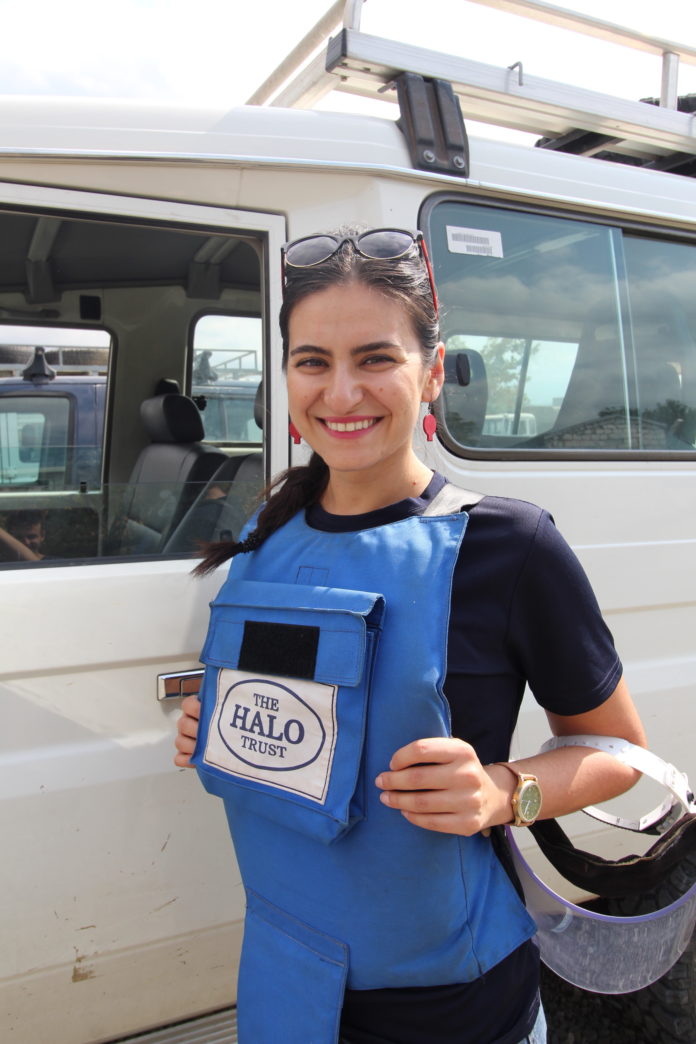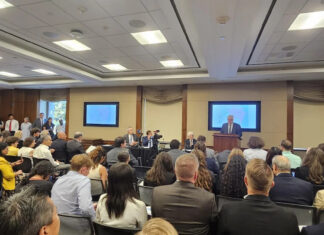By Alina Aslanian
STEPANAKERT —The strangest thing about Stepanakert right now is the silence. Armenians are naturally gregarious and social, so seeing the streets empty of playing children is unsettlingly eerie. It’s also an incredibly clean city, so seeing garbage, broken glass and upturned cars is also deeply odd. And then there are the craters, the bombed-out buildings and scattered remnants of bombs, munitions, and other remnants of fighting.
I entered Stepanakert to join my colleagues at the HALO Trust, a British-American mine clearance charity, on Sunday, October 11. I was on vacation in Yerevan when the war broke out a fortnight earlier. As a humanitarian charity dedicated to clearing up the debris of war, we knew we had to get to work as soon as the security conditions allowed.
HALO has been clearing landmines and ordnance from the 1992-1994 conflict in Nagorno Karabakh for 20 years. Fortunately, our compound hasn’t been badly hit by the shelling and we’re able to base ourselves there during daylight hours. During the first few days, our priority was accounting for our staff that remained in Stepanakert and working out logistics for further evacuations at the border. Then we had to contact our donors to let them know our status and our plans for our emergency response.
In a situation like this, where the security is still very fragile, you have to make the civilian population as safe as possible before every piece of explosive debris can be cleared and safely destroyed. So my colleagues and I walked the streets, handing out leaflets to help people identify cluster munitions and other deadly weapons to prevent accidents. The people are understandably traumatized. Most elderly people understand the dangers of landmines, but they’re not used to seeing these new types of cluster munitions in their backyard. Children are particularly vulnerable. Cluster munitions bear a cruel resemblance to toys, which prompts their innate curiosity. Last week we walked for over four hours, talking to everybody we came across in the street or in a shelter. But this is just an interim measure — only the removal and disposal of explosives can guarantee the safety of civilians and allow the future reconstruction of the city.
Before the war, part of my job was to interview local residents about the impact of landmine clearance on their lives. It made me proud to work for HALO and see how people had built houses and grown food on former minefields. But now they have to start all over again. I feel very frustrated for them.








